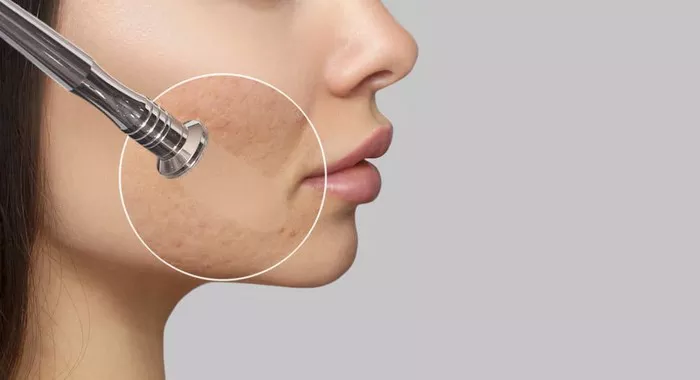What is Microdermabrasion?
Microdermabrasion is a cosmetic procedure that uses a special device to remove the outermost layer of the skin. The device uses either a stream of fine crystals or a diamond-tipped wand to exfoliate the skin and remove dead skin cells, dirt, and debris. The procedure is painless and non-invasive, and it is typically performed in a spa or a dermatologist’s office.
Microdermabrasion can be used to treat a variety of skin concerns, including fine lines and wrinkles, acne scars, age spots, and uneven skin tone. It is also an effective way to improve the overall texture and appearance of the skin.
What Happens if You Go in the Sun After Microdermabrasion?
After microdermabrasion, the skin is more sensitive and vulnerable to damage from the sun’s harmful rays. If you go in the sun without proper protection, you may experience a number of complications, including:
Sunburn: The skin may become red, painful, and inflamed if it is exposed to the sun without protection.
Hyperpigmentation: Exposure to the sun can cause the skin to produce too much melanin, resulting in dark spots and patches.
Skin Damage: Prolonged exposure to the sun can cause long-term damage to the skin, including premature aging, wrinkles, and skin cancer.
To avoid these complications, it is important to take proper care of your skin after microdermabrasion and protect it from the sun’s harmful rays.
How to Protect Your Skin After Microdermabrasion?
To protect your skin after microdermabrasion, it is important to follow these guidelines:
Avoid Sun Exposure: It is important to avoid sun exposure for at least two weeks after the procedure. If you must go outside, wear a wide-brimmed hat and protective clothing to cover your skin.
Use Sunscreen: Use a broad-spectrum sunscreen with an SPF of at least 30 every day, even if you are not planning to be in the sun for an extended period of time. Reapply the sunscreen every two hours or after swimming or sweating.
Avoid Heat: Avoid hot showers, saunas, and steam rooms for at least 24 hours after the procedure, as heat can further irritate the skin.
Moisturize: Use a gentle, fragrance-free moisturizer to keep the skin hydrated and soothe any irritation or redness.
Avoid Harsh Products: Avoid using harsh or abrasive products, such as scrubs or acids, on the skin for at least two weeks after the procedure.
Be Gentle: Be gentle when washing and drying the skin, and avoid rubbing or scrubbing it too hard.
Follow Your Skincare Professional’s Instructions: Follow any specific instructions provided by your skincare professional, as they may have additional guidelines based on your individual needs and skin type.
Why is it Important to Protect Your Skin After Microdermabrasion?
Microdermabrasion is a cosmetic procedure that can provide significant benefits to the skin, but it is important to take proper care of your skin after the procedure to avoid any potential complications. One of the most important things you can do to protect your skin after microdermabrasion is to avoid sun exposure.
After microdermabrasion, the skin is more sensitive and vulnerable to damage from the sun’s harmful rays. Sun exposure can cause a number of complications, including sunburn, hyperpigmentation, and skin damage. These complications can be painful, unsightly, and potentially dangerous, so it is important to take steps to protect your skin from the sun.
Using sunscreen, avoiding heat, moisturizing, and avoiding harsh products are all important steps you can take to protect your skin after microdermabrasion. By following these guidelines, you can help to ensure that your skin remains healthy, vibrant, and youthful-looking.
What are the Risks of Going in the Sun After Microdermabrasion?
Going in the sun after microdermabrasion can be risky, as the skin is more sensitive and vulnerable to damage from the sun’s harmful rays. Some of the most common risks of going in the sun after microdermabrasion include:
Sunburn: The skin may become red, painful, and inflamed if it is exposed to the sun without protection.
Hyperpigmentation: Exposure to the sun can cause the skin to produce too much melanin, resulting in dark spots and patches.
Skin Damage: Prolonged exposure to the sun can cause long-term damage to the skin, including premature aging, wrinkles, and skin cancer.
Infection: If the skin is not properly protected after microdermabrasion, it may be more susceptible to infection from bacteria or other harmful organisms.
To avoid these risks, it is important to take proper care of your skin after microdermabrasion and protect it from the sun’s harmful rays.
How Long Should You Wait Before Going in the Sun After Microdermabrasion?
It is important to avoid sun exposure for at least two weeks after microdermabrasion. During this time, the skin is more sensitive and vulnerable to damage from the sun’s harmful rays. If you must go outside, wear a wide-brimmed hat and protective clothing to cover your skin, and use a broad-spectrum sunscreen with an SPF of at least 30.
After two weeks, you can gradually increase your sun exposure, but it is still important to use sunscreen and take other precautions to protect your skin. It is also important to follow any specific instructions provided by your skincare professional, as they may have additional guidelines based on your individual needs and skin type.
Conclusion
Microdermabrasion is a safe and effective cosmetic procedure that can help to improve the texture, tone, and overall appearance of the skin. However, it is important to take proper care of your skin after the procedure to avoid any potential complications, especially if you plan to be in the sun.
To protect your skin after microdermabrasion, avoid sun exposure, use sunscreen, avoid heat, moisturize, avoid harsh products, be gentle, and follow your skincare professional’s instructions. By taking these steps, you can help to ensure that your skin remains healthy, vibrant, and youthful-looking.


